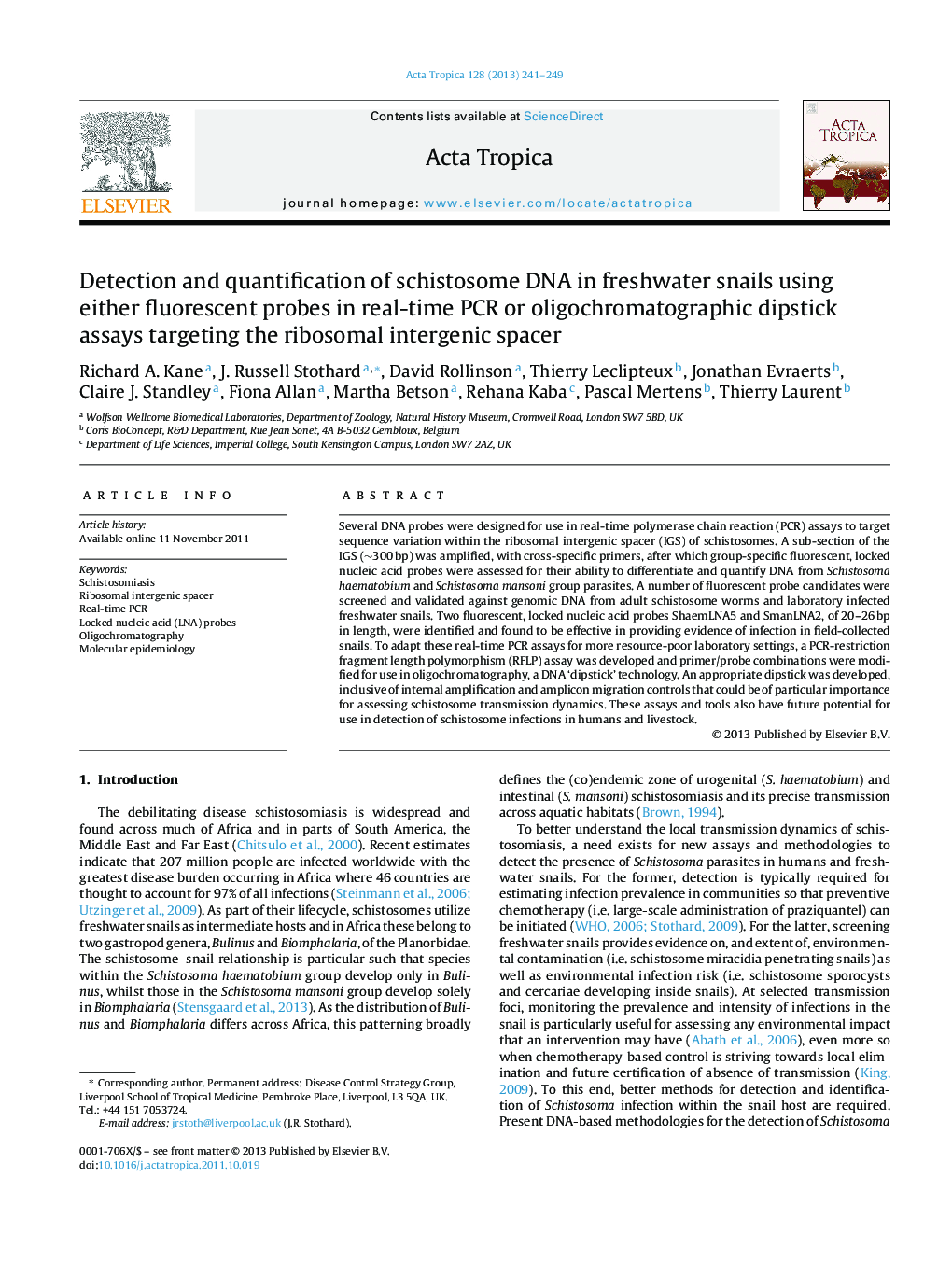| Article ID | Journal | Published Year | Pages | File Type |
|---|---|---|---|---|
| 3393869 | Acta Tropica | 2013 | 9 Pages |
▶ Use of locked nucleic acid probes to identify schistosome species groups. ▶ Development of oligochromatographic strips for schistosome species discrimination. ▶ Employment of the Schistosoma ribosomal intergenic spacer as a discriminatory tool. ▶ Comparison of methods for the detection of schistosome infection. ▶ Acc I restriction enzyme test for discriminating Schistosoma haematobium from Schistosoma bovis.
Several DNA probes were designed for use in real-time polymerase chain reaction (PCR) assays to target sequence variation within the ribosomal intergenic spacer (IGS) of schistosomes. A sub-section of the IGS (∼300 bp) was amplified, with cross-specific primers, after which group-specific fluorescent, locked nucleic acid probes were assessed for their ability to differentiate and quantify DNA from Schistosoma haematobium and Schistosoma mansoni group parasites. A number of fluorescent probe candidates were screened and validated against genomic DNA from adult schistosome worms and laboratory infected freshwater snails. Two fluorescent, locked nucleic acid probes ShaemLNA5 and SmanLNA2, of 20–26 bp in length, were identified and found to be effective in providing evidence of infection in field-collected snails. To adapt these real-time PCR assays for more resource-poor laboratory settings, a PCR-restriction fragment length polymorphism (RFLP) assay was developed and primer/probe combinations were modified for use in oligochromatography, a DNA ‘dipstick’ technology. An appropriate dipstick was developed, inclusive of internal amplification and amplicon migration controls that could be of particular importance for assessing schistosome transmission dynamics. These assays and tools also have future potential for use in detection of schistosome infections in humans and livestock.
Graphical abstractUtilization of the Schistosoma ribosomal intergenic spacer for the development of fluorescent locked nucleic acid probes and oligochromatographic strips for parasite detection and identification.Figure optionsDownload full-size imageDownload as PowerPoint slide
